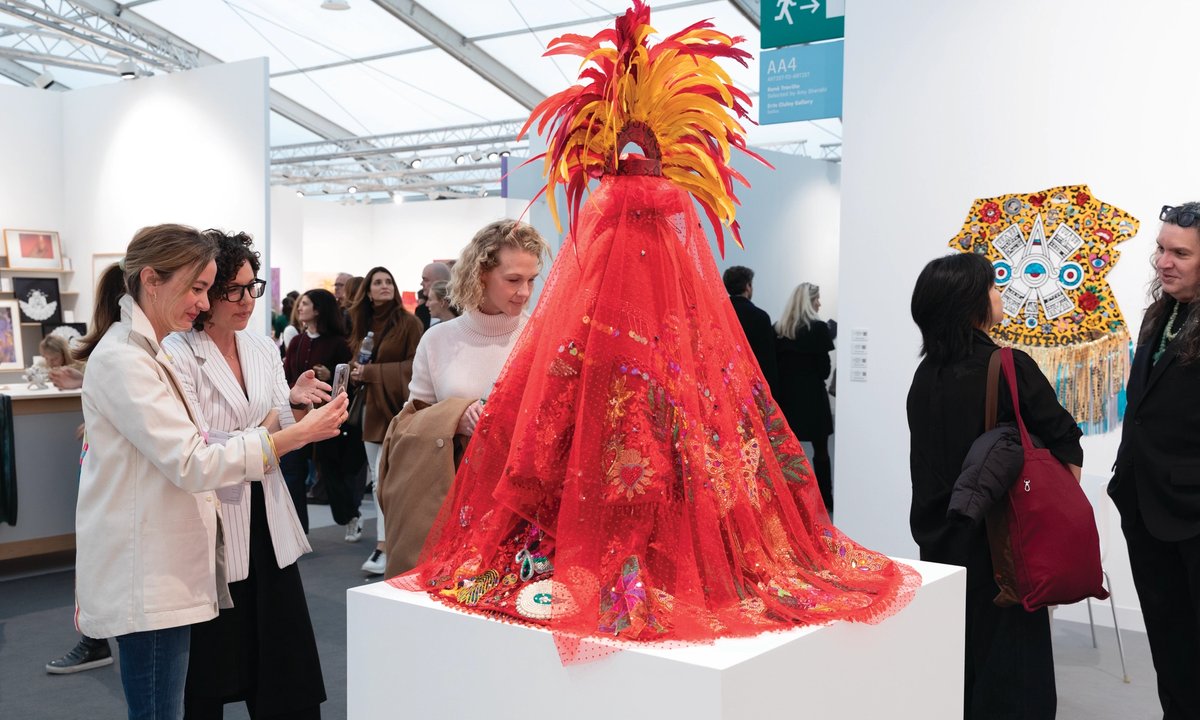
"The painter Amy Sherald made headlines over the summer when she cancelled the final leg of her touring exhibition at the National Portrait Gallery in Washington, DC, citing "a culture of censorship" targeting "vulnerable communities". At Frieze London this year, she has made room for an artist whose work gains resonance from and pushes back against this same fraught climate."
"The Mexican American artist René Treviño has been selected by Sherald to take part in Frieze's Artist-to-Artist section, where leading names pick an emerging artist for a solo presentation. Front and centre in the booth is Regalia, Moscas Brillantes (Rojo) (2025), a sculpture of a figure elaborately gowned in red feathers, appliqué, lace and rhinestones. It is a work that speaks, in part, to "the history of queer resistance in art", says the gallerist Erin Cluley."
"Treviño adds that he was also thinking about the histories of colonialism when making the piece, which fuses Aztec and European aesthetics. "I am kind of proposing an alternative future or past where instead of it being war and pillaging and rape, [the meeting of societies] could become: 'I know this thing, you know this thing, let's bring our ideas together and we'll move forward from here'," he says."
Amy Sherald cancelled the final leg of a touring exhibition at the National Portrait Gallery, citing a culture of censorship targeting vulnerable communities. Sherald selected Mexican American artist René Treviño for Frieze's Artist-to-Artist section, where he presents Regalia, Moscas Brillantes (Rojo), a red-feathered sculpture with appliqué, lace and rhinestones. Treviño draws on Aztec and European aesthetics and reflects on colonial histories while imagining alternative encounters between societies. Themes of unity and cultural exchange appear in circular paintings referencing the Mayan calendar, Turkish tilework and Greek shields, and in two Hercules paintings probing the weight of Latino and Indigenous heritage.
Read at The Art Newspaper - International art news and events
Unable to calculate read time
Collection
[
|
...
]